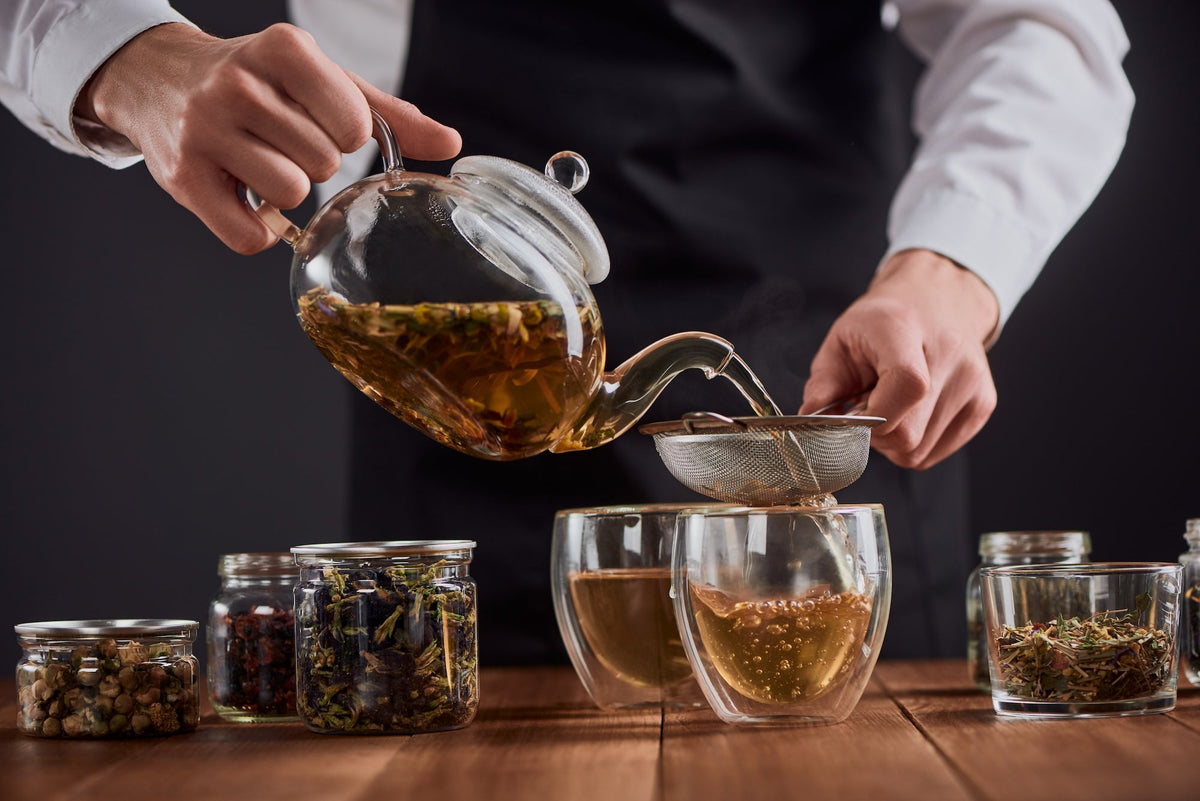
What Tea Is Served at Chinese Restaurants? A Complete Guide to Chinese Hot Tea
|
|
Time to read 5 min
|
|
Time to read 5 min
When you visit a Chinese restaurant , you're often greeted with a warm cup of Chinese hot tea, an essential part of Chinese dining culture. But have you ever wondered what tea is served at Chinese restaurants and why it is so common?
Tea has been a part of Chinese tradition for thousands of years, not only as a beverage but as a symbol of hospitality, health, and balance. Different types of Chinese restaurant tea offer unique flavors and health benefits, enhancing the overall dining experience.
In this comprehensive guide, we’ll explore:
✔ The most common hot teas served at Chinese restaurants
✔ Why Chinese restaurant hot tea is a must with meals
✔ How to properly drink and order Chinese hot tea
Let’s dive in!
Tea plays a significant role in Chinese cuisine and culture. At many Chinese restaurants, tea is served immediately upon sitting down —it’s not just about quenching thirst but about enhancing the meal.
Here’s why Chinese hot tea is always part of the experience:
Many traditional Chinese restaurant teas contain compounds that help break down fats and aid digestion. Since Chinese cuisine often includes rich, fried, or flavorful dishes, drinking Chinese restaurant hot tea can make the meal easier to digest.
Some teas, like oolong or pu-erh, have a mild astringency that helps refresh the taste buds between bites. This allows you to better appreciate the flavors of different dishes.
In China, serving tea is a sign of respect and hospitality. Many Chinese families and restaurants continue this tradition by offering Chinese hot tea as a welcoming gesture.
Drinking warm tea is soothing, making the dining experience more relaxing and enjoyable. It also complements the balance of yin (cool) and yang (warm) energies in food, a core concept in traditional Chinese medicine.
Now, let’s explore the most common teas served at Chinese restaurants and how they enhance different types of cuisine.
🌿 Flavor Profile: Floral, light, slightly sweet
💚 Why It’s Served: Calming aroma, refreshing taste
Jasmine tea is the most popular Chinese restaurant tea, especially in Cantonese dim sum restaurants. It is made by infusing green tea leaves with jasmine flowers, creating a subtly sweet and floral aroma.
Best With:
🍤 Dim sum
🍜 Light and mildly flavored dishes
🌿 Flavor Profile: Smooth, toasty, slightly floral
💚 Why It’s Served: Medium-bodied tea that pairs well with a variety of dishes
Oolong tea is semi-oxidized, falling between green and black tea in strength. It is commonly served in both casual and high-end Chinese restaurants because of its versatile flavor profile and digestive benefits.
Best With:
🥩 Roast duck, BBQ pork (char siu)
🥡 Stir-fried dishes
🌿 Flavor Profile: Earthy, deep, mellow
💚 Why It’s Served: Helps digest rich, oily foods
Pu-erh tea is a fermented tea from Yunnan Province , known for its probiotic benefits and digestive properties . It’s commonly served after meals in Chinese restaurants , particularly those specializing in rich, meat-heavy dishes.
Best With:
🥢 Peking duck, hot pot
🍖 Fried or braised dishes
🌿 Flavor Profile: Fresh, grassy, slightly bitter
💚 Why It’s Served: High in antioxidants, mild energy boost
Though less common than jasmine tea , some restaurants serve Dragon Well (Longjing) green tea , a famous variety from Hangzhou known for its sweet, nutty notes.
Best With:
🍣 Seafood dishes
🌿 Flavor Profile: Mildly sweet, floral
💚 Why It’s Served: A cooling tea that soothes the throat and body
Unlike other teas, chrysanthemum tea is not made from tea leaves but from dried chrysanthemum flowers. It’s often served in spicy Sichuan or hot pot restaurants, as it cools the body and helps balance spicy foods.
Best With:
🌶 Spicy Sichuan cuisine
🥘 Hot pot
If you’re dining at a Chinese restaurant and want to enjoy authentic Chinese restaurant tea, here are some tips:
The hot tea served at Chinese restaurants enhances the dining experience, aids digestion, and complements different dishes. The most common Chinese restaurant hot teas include:
🍵 Jasmine tea – Light and floral, ideal for dim sum
🍵 Oolong tea – A balanced tea that pairs well with many dishes
🍵 Pu-erh tea – Earthy and strong, perfect for heavy meals
🍵 Green tea – Fresh and grassy, great for seafood and light foods
🍵 Chrysanthemum tea – A caffeine-free herbal tea for spicy dishes
Next time you dine at a Chinese restaurant, take a moment to appreciate the rich tea culture that comes with your meal!
Want to enjoy authentic Chinese tea at home? Visit Red Rock Tea House for premium selections!
Chinese restaurants serve hot tea for several reasons:
✔ Aids digestion – Helps break down rich and oily foods.
✔ Cleanses the palate – Refreshes the taste buds between bites.
✔ Cultural tradition – A symbol of hospitality in Chinese dining.
✔ Health benefits – Contains antioxidants and promotes relaxation.
es, most Chinese hot tea varieties contain caffeine.
If you're sensitive to caffeine, ask for caffeine-free tea options like chrysanthemum tea.
No, traditional Chinese restaurant hot tea is served plain, without sugar or milk. The natural flavors of the tea are meant to complement the food without overpowering it.
Yes! Most Chinese restaurants will refill your teapot with hot water for free. If your tea becomes too weak, you can request new tea leaves for a fresher brew.
Healthline - Jasmine Tea Benefits
🔗 https://www.healthline.com/nutrition/jasmine-tea-benefits
National Library of Medicine - Oolong Tea and Digestion
🔗 https://www.ncbi.nlm.nih.gov/pmc/articles/PMC7770489/
Medical News Today - Pu-erh Tea Benefits
🔗 https://www.medicalnewstoday.com/articles/pu-erh-tea-benefits
Healthline - Green Tea Health Benefits
🔗 https://www.healthline.com/nutrition/top-10-evidence-based-health-benefits-of-green-tea
WebMD - Chrysanthemum Tea Benefits
🔗 https://www.webmd.com/diet/chrysanthemum-tea-health-benefits
Mayo Clinic - Caffeine Content in Teas
🔗 https://www.mayoclinic.org/healthy-lifestyle/nutrition-and-healthy-eating/expert-answers/caffeine-content/faq-20057941
Serious Eats - How to Brew Chinese Tea
🔗 https://www.seriouseats.com/how-to-brew-tea
Harvard Health - Tea and Digestion
🔗 https://www.health.harvard.edu/diet-and-weight-loss/tea-a-cup-of-good-health
Describe your products, collection etc...
What are you looking for?












